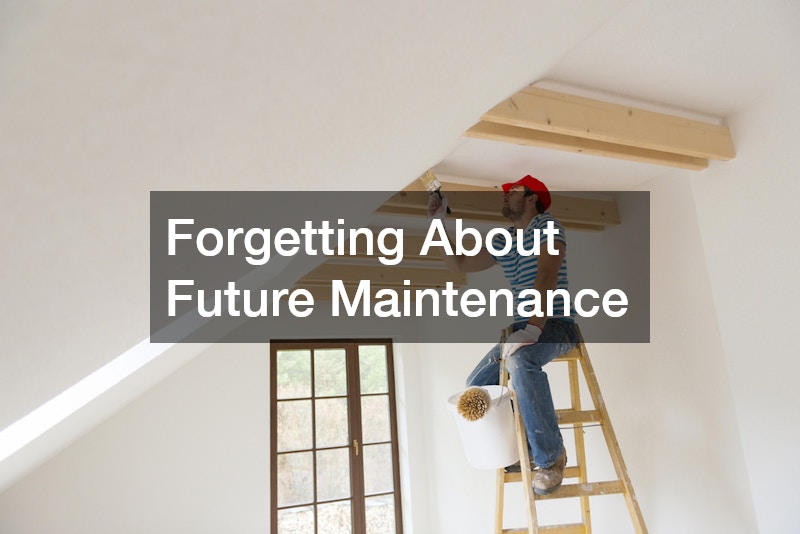Remodeling your home can be an exciting process—full of creative potential, fresh starts, and the chance to shape your living space around your evolving needs and tastes. But as thrilling as it may be, the reality is that home renovations often come with unexpected challenges, especially when you’re working with a limited budget. Costs can spiral, priorities can shift, and mistakes can happen more easily than you might expect. Whether you’re updating a single room or tackling a larger home overhaul, being strategic and well-informed is critical.
When you’re remodeling on a budget, there’s very little room for error. Every dollar counts, and every decision—from materials to timelines—can either help you stay on track or push you into financial frustration. Avoiding common pitfalls not only protects your investment but also ensures that the finished result truly reflects your vision. In this post, we’ll walk you through ten common mistakes to avoid during a budget-conscious renovation, helping you make smarter choices and stretch your resources further. Let’s start with the first two missteps that could throw your entire project off course.
Underestimating the Total Cost

One of the most common and costly mistakes homeowners make is underestimating the full scope of a remodeling project’s cost. It’s easy to focus on the major expenses like new appliances or countertops and forget about the smaller, cumulative costs—such as permits, tools, delivery fees, or waste disposal—that sneak up and quickly add to your bottom line. When remodeling on a budget, failing to factor in these seemingly minor details can result in either pausing your project midway or sacrificing important elements of your original plan.
A comprehensive cost estimate should include contingencies for the unexpected, because things rarely go exactly as planned. For example, working with kitchen designers can be a worthwhile investment, but their fees should be built into your upfront budget, not treated as an afterthought. Even if you’re taking a more DIY approach, it’s important to research pricing thoroughly and ask the right questions early on. Planning with a clear financial roadmap helps you allocate funds smartly and avoid unpleasant surprises.
Skipping the Planning Phase
Jumping straight into demolition or purchases without a solid plan might feel productive in the moment, but it often leads to costly mistakes and missed opportunities. A well-thought-out remodeling plan acts as your project’s blueprint, helping you visualize the end result and coordinate the steps required to get there. Without one, it’s easy to fall into a reactive mode—responding to issues as they arise instead of proactively avoiding them. This is especially risky when you’re remodeling on a budget, as last-minute changes often cost more and disrupt your timeline.
Let’s say you’re upgrading your kitchen and are excited about replacing old storage. You rush out and buy a new kitchen cabinet set that looks great, but you haven’t measured your space properly, coordinated the layout, or considered installation logistics. Now, not only do the cabinets not fit right, but adjusting for the mistake eats into your budget. Planning every detail in advance, even something as “simple” as storage, ensures that each purchase aligns with your overall goals and limitations. Careful planning now saves money and stress later.
Choosing the Cheapest Materials
When working with a limited budget, it’s tempting to cut corners by choosing the least expensive materials available. While this may seem like a smart way to save money upfront, it often results in higher costs down the line due to repairs, replacements, or even complete do-overs. Durability, functionality, and aesthetic appeal should all be considered when selecting materials, especially if you want your renovation to stand the test of time. In short, when remodeling on a budget, short-term savings shouldn’t come at the expense of long-term value.
Consulting with an interior designer, even briefly, can help you identify cost-effective alternatives that don’t sacrifice quality. For instance, rather than opting for the cheapest laminate flooring that will peel or warp within a year, a designer might suggest a mid-range option that offers better wear and still fits within your budget. Many professionals are skilled at helping homeowners prioritize their spending and source materials that align with both vision and finances. Smart, informed choices up front are key to remodeling on a budget without regret.
Ignoring Professional Advice

While DIY culture is thriving, and while there’s nothing wrong with tackling parts of your renovation on your own, completely dismissing professional input can be a major misstep. Experts offer experience and insight that the average homeowner may lack—things like structural considerations, building codes, and workflow efficiencies. When remodeling on a budget, leveraging the knowledge of professionals, even in small doses, can prevent costly mistakes that DIY tutorials often don’t account for.
Take flooring installation, for example. Laying down new floors might look simple on a video, but doing it incorrectly can lead to uneven surfaces, moisture problems, or premature wear—issues that can be expensive to fix later. Consulting a professional, even just for an assessment or initial guidance, can help you determine if the job is truly DIY-friendly or worth delegating. Avoiding rework not only protects your budget but also the integrity of your finished space.
Overlooking Hidden Expenses
Many homeowners go into a renovation with a clear idea of major costs—like fixtures, paint, and labor—but forget to account for the smaller, hidden expenses that inevitably arise. These include things like structural repairs, tool rentals, disposal fees, and code compliance upgrades. When remodeling on a budget, these overlooked costs can be the tipping point that sends you beyond your financial comfort zone. Including a contingency of 10–20% in your budget can give you a cushion when the unexpected happens.
For instance, you might be updating lighting in your home and discover that your electrical system is outdated or not up to code. Now, you need to bring in an electrician to rewire part of the space—an expense you didn’t originally factor in. Ignoring these potential scenarios can leave you scrambling for funds mid-project or settling for incomplete work. A realistic, all-inclusive budget helps ensure you’re prepared for whatever challenges your remodel brings.
Rushing the Remodeling Process
When you’re excited about updating your space—especially after spending time planning and budgeting—it’s natural to want everything done quickly. However, rushing through a remodel can lead to skipped steps, low-quality results, and avoidable mistakes. Remodeling on a budget often requires even more patience than a high-end project, because you’re balancing timelines with limited resources, fewer workers, and tighter coordination. Good results take time, and trying to hurry them along can be a recipe for regret.
Imagine you’re remodeling a bathroom and skipping ahead to cosmetic upgrades without properly inspecting the plumbing. A few weeks later, you notice leaks or water pressure issues—problems that could’ve been avoided if you’d brought in a plumbing contractor early on. Now, you may need to remove tiles or fixtures you just installed, blowing your budget and timeline. Giving each phase of the project the attention it needs will help you avoid rework and unnecessary expenses while remodeling on a budget.
Failing to Set Priorities

One of the biggest challenges in remodeling on a budget is learning how to say no—or, at the very least, delaying certain updates for a later time. Without a clear understanding of your priorities, it’s all too easy to get swept up in the allure of trendy designs or aesthetic details, which can lead you to overlook the essential improvements your space truly needs. By defining your non-negotiables early in the process, you can direct your time, energy, and finances toward the most important updates, ensuring that your remodel remains functional and impactful, while saving the less urgent projects for future phases when additional funds become available.
Say your foundation or flooring needs stabilization before you start on more visible upgrades. Working with a concrete contracting professional to address structural concerns should come before spending on backsplash tile or paint colors. Ignoring foundational needs in favor of surface-level changes might make your space look better temporarily, but it won’t last. Prioritizing structural integrity and functionality is essential when remodeling on a budget—you want your upgrades to be beautiful and built to last.
Hiring Unqualified Contractors
In an effort to save money, some homeowners turn to the cheapest labor they can find, even if the person isn’t fully qualified for the job. This can result in subpar workmanship, safety hazards, and costly fixes later on down the line. Remodeling on a budget doesn’t mean hiring the least expensive help available—it means finding the right balance between affordability and professionalism. A skilled, reputable contractor will get the job done right the first time, saving you money in the long run.
For example, if you’re replacing or upgrading your garage access, you might be tempted to skip professional garage door companies and hire a general handyman. But improperly installed garage doors can pose safety risks, compromise security, or function poorly. In this case, spending a little more on a certified company ensures the job is done safely and correctly. When it comes to specialized tasks, investing in qualified help is a smart move—even when remodeling on a budget.
Neglecting Permits and Codes
Permits and building codes might seem like unnecessary bureaucratic hurdles, but they exist for good reasons—chief among them safety, legality, and resale value. Skipping this step might save time and money in the short term, but it can lead to major complications if you decide to sell your home or if an inspector flags unpermitted work. When remodeling on a budget, staying compliant helps protect your investment and avoid penalties that could derail your finances.
Even simple upgrades can trigger code requirements. For instance, if you’re removing debris from a kitchen remodel and using recycling services, you may still need a permit for the demolition itself, especially if it involves structural changes. Ignoring those requirements could result in fines or being forced to undo finished work. It’s always better to check local regulations up front than to pay for it—literally—later. Legal missteps are a completely avoidable risk when remodeling on a budget.
Forgetting About Future Maintenance

It’s easy to focus all your attention on getting the remodel done, but one mistake many homeowners make is failing to think ahead about long-term upkeep. Every choice you make—whether it’s the flooring, layout, or appliances—comes with maintenance needs. When remodeling on a budget, picking materials and features that are affordable to maintain is just as important as their purchase price. Otherwise, those “savings” might be short-lived.
Let’s say you buy a beautiful new couch or dining set during your remodel from a trendy furniture store, but don’t consider how well it will hold up to pets, kids, or daily use. If it starts to wear out after just a year, you’ll have to replace it sooner than expected, wasting both time and money. Choosing finishes and furnishings with durability and low-maintenance needs in mind is a smart strategy when remodeling on a budget. It ensures your space looks great now and later.
Remodeling on a budget isn’t just about pinching pennies until you can get the job done—it’s about making strategic, informed decisions every step of the way. It’s about planning carefully, knowing where to invest and where to save, and understanding the true cost behind each choice. Whether you’re revamping a single room or giving your entire home a much-needed facelift, avoiding the common pitfalls we’ve covered can help you achieve high-quality results without financial regret.
From underestimating costs to overlooking the value of professional guidance, each mistake adds unnecessary stress and expense to an already complex process. But with the right mindset and a clear strategy, remodeling on a budget can be both financially manageable and creatively rewarding. By learning from the missteps others have made, you’ll position yourself to complete your remodel with confidence, efficiency, and pride. And most importantly, you’ll create a living space that reflects your vision—without breaking the bank.




